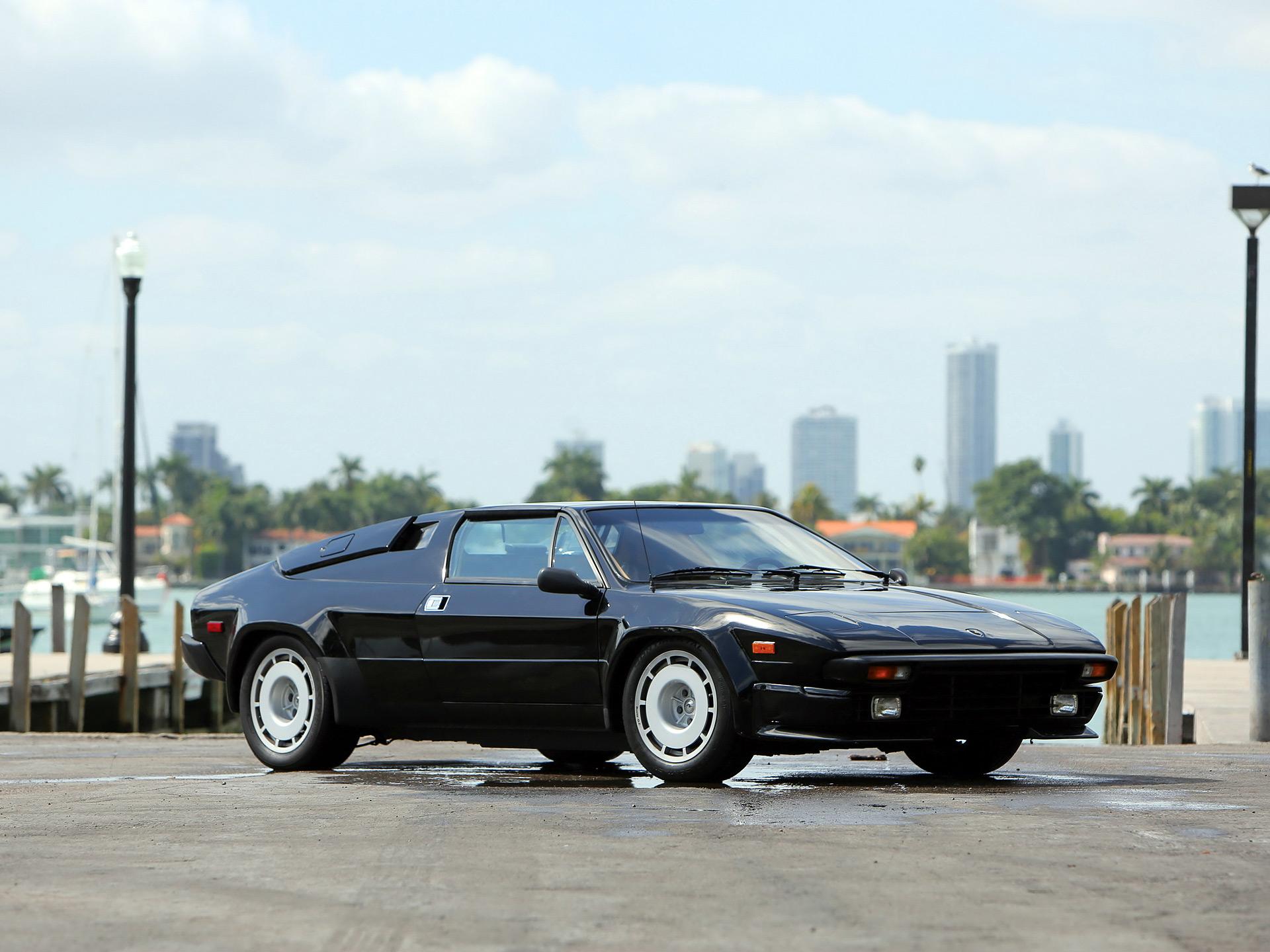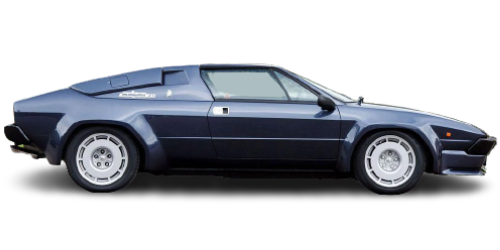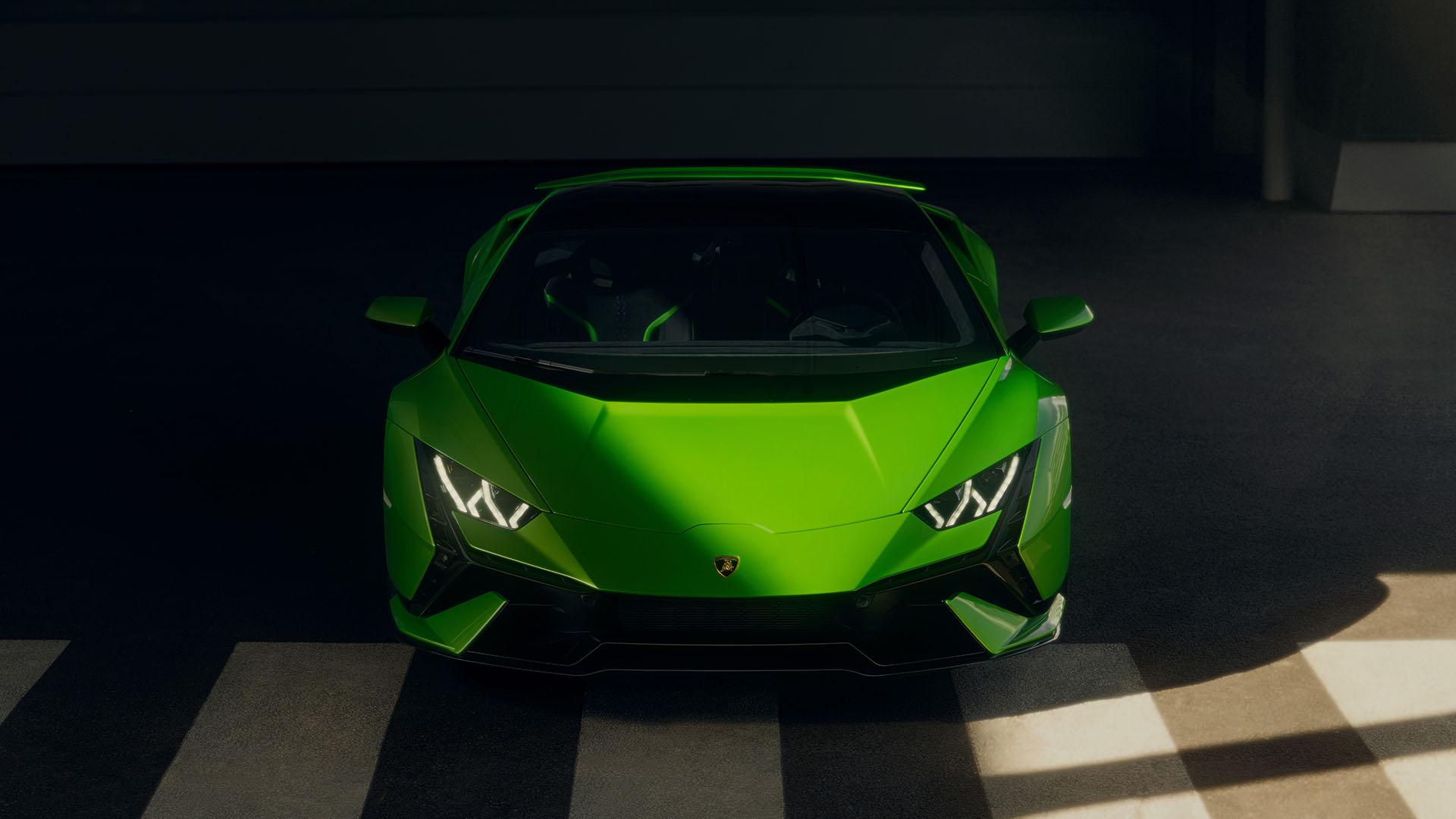The final attempt at creating an entry level Lamborghini with a V8 engine was the Jalpa (pronounced ‘yawl-pa) another name given in true Lamborghini tradition, taken from a famous breed of fighting bulls, just like the Miura model name all those years ago.
This new V8 model was based on the original Urraco, just like the Silhouette a few years earlier, but the Jalpa was more a successor to the Silhouette in concept due to the similar open top, targa style roof configuration of one large removable panel above the driver and passenger.
By the time the Jalpa was ready to be shown to the public, Ferruccio already sold his shares of the Raging Bull company, it was now called Nuovo Automobili Lamborghini SpA and at this time a lot of fresh ideas were emerging from Sant’Agata, some good, some a bit strange, but the idea behind the Jalpa was a sound one to begin with.
Lamborghini showed a brightly finished prototype for their final V8 evolution, a light brown metallic bodywork over a brown leather interior, note that the striped upholstery of this prototype would not be available in the final production version, neither would the rear spoiler that was shown on this prototype.
The prototype also showed color coded bumpers and brand new, 16 inch wheels only the wheels would be retained, the production version of the Jalpa was to receive black bumpers to the front and rear, a black engine cover and similar black finished air intakes just behind the side windows, also early Jalpa would use the taillights from the Silhouette until the 1984 Geneva Auto Show, when a few changes were presented, the black engine cover and side air intakes were now color coded to the rest of the body and the tail lights became circular units.
The dashboard used a new kind of box-shaped instrumentation, on the early production Jalpa a steering wheel similar to the Silhouette’s was used, later to be replaced by a larger, more contemporary model featuring a large triangular shaped center, especially the leather rim became thicker which allowed for more comfort while driving.
On the whole the Jalpa may have looked less spectacular than the angular Silhouette, but it was actually very in style with the other super cars of that era, the deep front bumper was nicely integrated, the wheel arch extensions weren’t as dramatically shaped as the Silhouette ones and the use of larger, 16 inch flat front wheels was very Eighties too, add to this the ‘Targa’ style roof popular on both Ferrari 328 and Porsche 911 and you know the Jalpa went head to head with some serious competition.
The 3.0-Litre V8 engine found in the Silhouette and the Urraco P300 was enlarged to a 75mm stroke resulting in a 3485 cc displacement, power went up to 255 bhp at 7000 rpm, the 3.5 liter engine gave this new model its full name : Jalpa P350.
The Jalpa could be driven topless once again, and this time power and workmanship was right up to the level we’ve come to expect from Lamborghini, this Bull was actually easy to drive, even in city traffic so the Jalpa could have become a massive success but it disappointed again, and after about six years of production only 410 units had left the gates at Sant’Agata.
You might wonder why this new Jalpa didn’t quite live up to its expectations, it was an elegant design executed by Bertone, not overly exotic like a Countach but still very nice, it offered convertible driving with an amazing sounding V8 engine just behind your ears, and it was officially sold in the United States, so what happened?
There were still a few problems with the latest V8 offering, the driving position wasn’t very comfortable, although the nice looking, full leather seats were completely adjustable, including the backrest, which were fixed on the Silhouette by the way, it was still rather difficult to find a good setup behind the steering wheel of the Jalpa.
The windscreen could have some very distracting reflections when driving at night and even the vertically mounted rear window would show reflections when looking into the rear view mirror. Some even complained about the inadequate pop-up headlights or the unstable exterior rear view mirrors which didn’t help the visibility in this new Baby-Lamborghini as it was sometimes called, but even the legendary Countach suffered from the latter two problems who needs to see what’s behind anyway, right?
However one of the main reasons for its rather low sales figures was probably the competition, by the time the Jalpa was available to the public in 1982, Ferrari had launched the 308 model that was later replaced by the 328 series, both would be available in GTS version, and it was a serious competitor in the market the Jalpa was intended for, add the successful Porsche 911 that remained in production for ages, and you had two major counterparts to choose from.
Another possible downside for the Lamborghini Jalpa could be the design, that’s right, perhaps it was a little too elegant, not exotic enough. People that were buying a Lamborghini in the Eighties bought the Countach, which almost looked like an alien spaceship compared to the competition next to such an automotive icon, the Jalpa looked plain, so perhaps people just didn’t like it because it was not different enough from the competition, something they got used to with the radical Miura and Countach, you buy a Raging Bull to be noticed and you have to admit the Jalpa does not stand out in crowd like a Countach would.
To turn things around Nuovo Automobili Lamborghini SpA tried one more trick, a full convertible now that was something the competition from Maranello didn’t have, so two prototypes of a Jalpa Spyder were built, but overall design of this concept didn’t get approval from management at Sant’Agata, it became obvious the rear section of the bodywork was not well balanced without the tunnel back rear section.
Also it became obvious the canvas top would become too difficult to fold down nicely into a recess ahead of the engine cover and the entire project was abandoned in 1987 Jalpa production was halted completely in July 1988, selling only 410 units in six years. Do note that the Jalpa, was again officially certified for sale in the United States, so an important part of the production can still be found over there.
During the final production year, some Jalpa were ordered with the amazing Silhouette wheels that were still around at the factory, only 15 inch tall compared to the original 16 inch units, but those wide Pirellis at the rear more than made up for this smaller height. Today these wheels are highly sought after, and very expensive to come by in decent condition. Some Jalpa even had a massive Countach style rear wing at the back, perhaps a little out of place on the ‘small’ V8 model, but very impressive nonetheless, however several owners removed the wing later on. Some Jalpa were even seen with side moldings connecting the front and rear wheel arch extensions, it is noteworthy that the Jalpa would be tuned more easily than the Countach, probably due to the lower pricing of this V8 model.
Today the Jalpa is one of the most ‘affordable’ Lamborghinis, just do not underestimate maintenance however, a Jalpa can become unreliable, just like any other Lamborghini or exotic car for that matter, when it isn’t regularly and competently serviced, in terms of pure performance however the Jalpa is as good as it gets. With an MSRP of $58,000 back in 1988, 2012 prices range from $17,000 to $41,300 depending on the condition of the car, but it’s better to pay a little more for a great car than buying a money pit, restoring a bad car takes a lot of courage and even more money.
Talking about money, let’s take a look at the other V8 models, the Silhouette had a healthy MSRP of $44,500 back in 1978, and because of the very low production numbers a decent car will still fetch about $45,000 while a nice Urraco P300 from 1976 (MSRP $39,000) will take anything between $15,000 and $32,000 to secure in your garage. The original P250 on the other hand would require about $22,500 when it was in production in 1975, but on the used car market today you can find them for $12,000 to $31,000 which makes it the cheapest Lamborghini available today but don’t think you can afford it too quickly, a Bull not only takes money to buy, but sometimes even more money to keep on the road.
For many years the Lamborghini Jalpa would remain the Baby-Lambo, a smaller counterpart next to the space-age Countach, however 15 years after the last Jalpa left the factory at Sant’Agata a new Baby Lamborghini became available in 2003 the amazing Gallardo, powered by an even more impressive V10 engine.
The design of these early V8 models might look a little dated today, but let’s take a second look at them, especially the Jalpa can still be used as a daily driver, it won’t attract the same attention as a Countach or a Diablo, which isn’t necessarily a bad thing mind you, because of the rather low production numbers compared to the V12 flagship models, the Jalpa isn’t easily recognized by casual onlookers, especially after 25 years.
Pull up in a Countach and you make an instant statement, good or bad, but when you step out of an Urraco or a Jalpa most of the people around you will probably not even know it’s a Lamborghini if that is a good thing or a bad thing depends on where you park it I guess. Still I feel the Urraco, the Silhouette and the Jalpa are full members of the Lamborghini heritage, and receive their place in the ‘Hall of Fame’ of the Raging Bull make.




